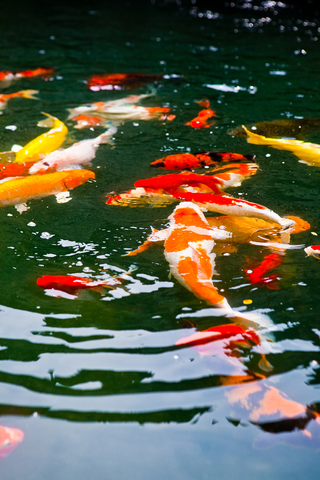Ponds on the Level, Part 3

This is the third and final article in a series on auto-fill systems for ponds and watergardens.
Although relative cost is certainly a key factor in the selection and installation of an auto-fill system for a pond or watergarden, there are practicalities that come into play in the decision – not the least of which will have to do with how the device is to be mounted.
Float valves, for example, come in a variety of forms – some with large float bulbs attached to pivoting arms (as with common toilet valves). Not only are these devices fairly unsightly, but they also operate in a horizontal plane and need significant room to operate. This is among the reasons why alternative, vertically oriented float systems are now widely available: They have the advantage of considerable reducing the footprint of the mechanism.
No matter the appearance, however, pond owners seldom want to see float valves or electromechanical fill devices anywhere inside their ponds, so instead they are mounted either in the skimmer or in a remote valve box set up adjacent to the pond. In either case, concealing these devices brings an extra level of difficulty to the installation process. By contrast, electronic systems usually feature small sensors that can easily be hidden from view inside the pond, while the working components of the system are installed remotely and stay well out of sight.
This issue of appearance leads many professional pond installers in the direction of the least visually intrusive option.
FUNCTIONAL DISTINCTIONS
Beyond aesthetics, electronic systems offer a range of functions that go well beyond systems using float valves. In some cases, they are quite simple: Indicator lights tell you, for example, whether there’s power to the system and whether filling is in progress and no more. Others offer an array of status indicators and alarms that make the systems more helpful.
The three main indicators offered by higher-end electronic systems mostly have to do with set points and the levels at which the water turns on or off and at which point various alarms will activate – this by comparison to mechanical systems that offer no indicators at all.
By contrast, electronic systems will turn on when the water hits a certain low point and turn off when it reaches a high point. (This establishment of a range is helpful in that it keeps the system from cycling as often.) Most systems will delay the fill operation if the water surface is moving and the sensor might therefore provide erroneous readings that could lead to inaccurate filling. And some have low-level cutoffs that indicate an alarm and shut down pumps in the event the water level drops below a pre-set level or indicate that the system is running constantly to keep up with demand.
In addition, there are stripped-down versions on the market that require no controller and use only a sensor, an irrigation valve and a power supply. These units are economical, but as is the case with float-valve systems, they function on a single level rather than with an operating range and offer no additional information about overall system performance.
BOTTOM LINES
So which way should a pond owner go? As these articles have demonstrated, price is a consideration, but not the sole consideration and should be weighed in the context of potential for failure, maintenance time, features, installation requirements and product warranty.
An inexpensive float valve may seem the best approach to the average pondkeeper, but in maintenance time alone, an electronic system can save many hours of cleaning mechanical assemblies or replacing malfunctioning floats. In addition, the ability to maintain more accurate levels in the pond along with the added protection of alarms signaling various out-of-range readings can quickly make the extra cost worthwhile.
When all is said and done, any auto-fill system is preferable to none at all. Filling a pond manually by hose, for instance, dictates that the owner must observe the water level at all times. This can result in fluctuations in level of several inches – not good for plants or fish. No matter which way you go, auto-fills keep ponds healthier, reduce maintenance time and limit hazards related to low water levels.
It’s an easy call – and good for our favorite little ecosystems!
Hollye G. Merton began building ponds while in elementary school, inspired by her father’s construction of a Japanese-style pond in their backyard. In 2009, she founded Aquility Systems, the manufacturer of the Level Waters automatic water-leveling system. She may be reached at hmerton@aquilitysystems.com










